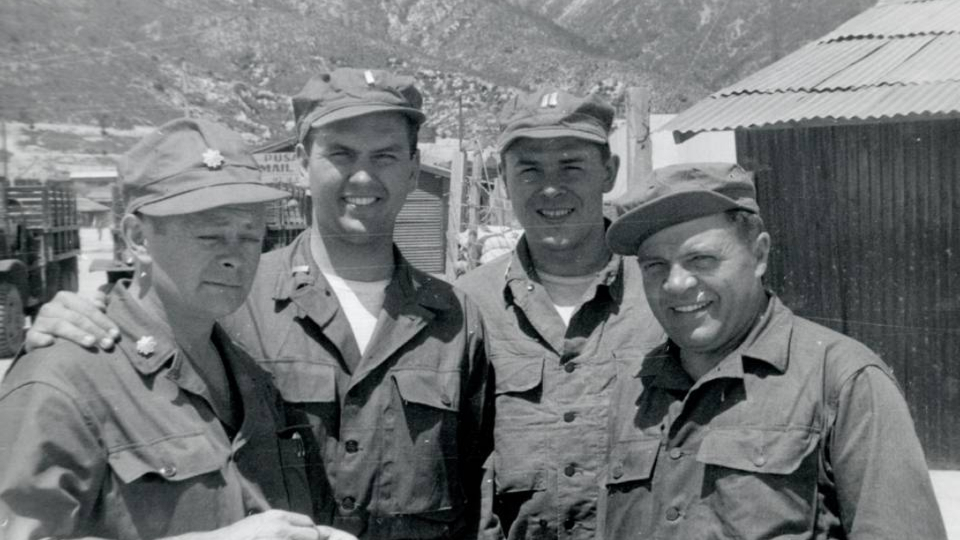
byu-saints-at-war-1.jpg
As a lieutenant, Russell M. Nelson, second from left, visited every mobile army surgical hospital in Korea. Photo provided by President Russell M. Nelson, courtesy of Church News.All rights reserved.This story appears here courtesy of TheChurchNews.com. It is not for use by other media.
By Trent Toone, Church News
More than six decades before serving as President of The Church of Jesus Christ of Latter-day Saints, Russell M. Nelson was a member of the U.S. Army during the Korean War.
For much of his military service, President Nelson was assigned to Walter Reed Medical Center in Bethesda, Maryland. But during the summer of 1951, he toured all mobile army surgical hospital (MASH) units in South Korea and gave recommendations for improved medical care for injured soldiers, which sometimes took him right to the battlefront.
While visiting one MASH unit, President Nelson met a young Latter-day Saint soldier who had been paralyzed by a gunshot wound. He wanted to comfort the young man but wasn’t sure what to say. He said he “greeted him and expressed condolences and love as best I could.”
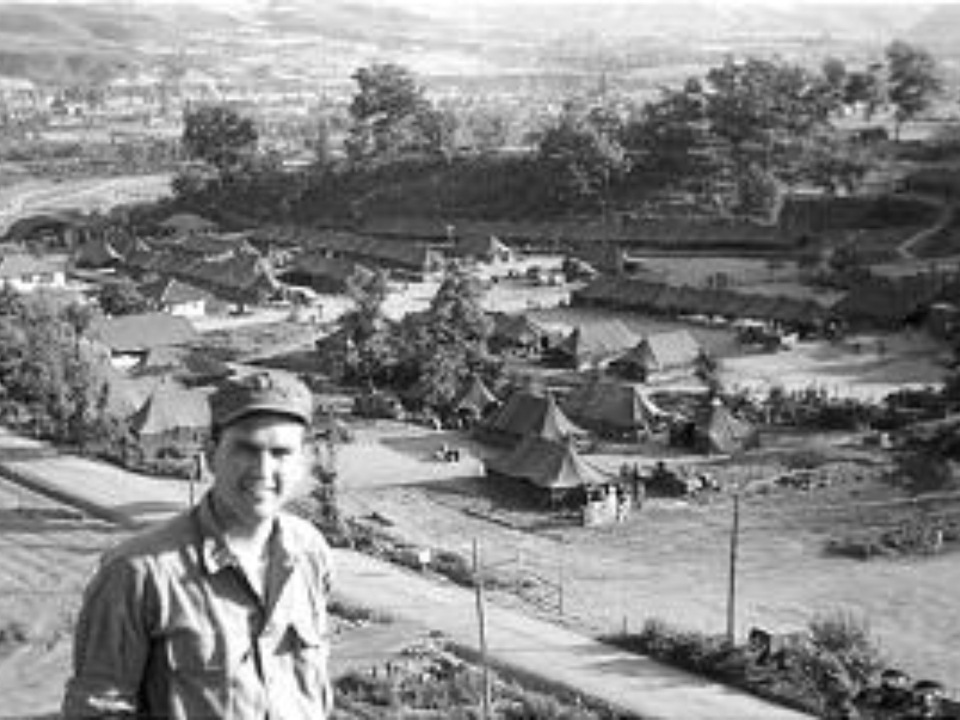
byu-saints-at-war-2.jpg
Elder Russell M. Nelson, then a first lieutenant and later a captain, was part of a team that visited all five Mobile Army Surgical Hospitals, including the 8209 in June 1951 at Hongchon, Korea. The results of the significant tour resulted in changes of caring for the wounded. Photo provided by President Russell M. Nelson, courtesy of Church News.All rights reserved.President Nelson ended up being the one who was comforted when the soldier said, “Don’t worry about me, Brother Nelson, for I know why I was sent to the earth — to gain experience and work out my salvation. I can work out my salvation with my mind and not with my legs. I’ll be all right.”
“The faith of that young man has motivated me ever since,” President Nelson recorded afterward.
The military memory is one that President Nelson shared with Brigham Young University’s “Saints at War” project, an ongoing effort to gather and document personal accounts of Latter-day Saint who served their country during wartime.
Interviewing President Nelson about his wartime experiences was one of the true career highlights of BYU Church History professor Robert C. Freeman and a favorite memory of working on the project.
“He is arguably the first president of the Church to have been a bonafide member of the military who was in a war zone,” Freeman said. “Even our own present Prophet has shared and lent his voice to this preservation process.”
‘Saints at War’ Project
Since 1999, the project has collected more than 3,000 accounts, which are now preserved at BYU’s L. Tom Perry Special Collections Department, thanks to the work of many colleagues, volunteers and collaboration with the National Veteran’s History Project with the Library of Congress and National Archives.
The collection includes information and perspectives of individuals who served in international militaries. The thousands of voices preserved demonstrate the global Church membership experience, Freeman said.
“The mission of the project has been to educate, pay tribute and to deepen appreciation of the cost of freedom to those both inside and out of the Church,” he said. “One distinctive aspect to the research is that it seeks to shine a light on the inspiring moments when, in the midst of danger, a sense of divine preservation was experienced by a soldier, airman or sailor.”
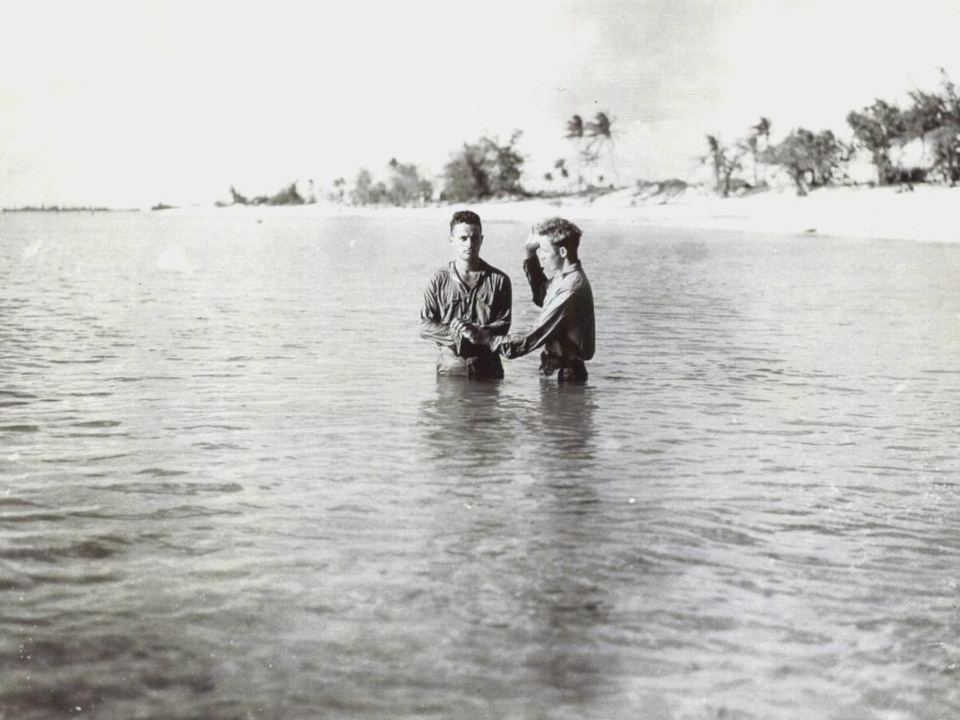
byu-saints-at-war-4.jpg
In the midst of World War II, a convert baptism takes place in a lagoon in Saipan. Convert baptisms during wartime service provided some Latter-day Saints with pivotal spiritual missionary experiences often far from home. Photo from L. Tom Perry Special Collections, BYU, courtesy of Church News.All rights reserved.As a result of the project, many of the personal accounts from various wars in the 20th century, including the experiences of several Church leaders, are featured in books and documentary films. Over the years, BYU has held several veteran conferences to recognize and honor those who have served.
“Veterans have shared their accounts in a spirit of trust and with the hope that their experiences can inspire generations that follow after them,” Freeman said.
Although Freeman will soon retire, the “Saints at War” project will continue. Anyone interested can learn more by contacting BYU’s “Saints at War” research office at 801-422-2484 or email robert_freeman@byu.edu.
“The price [of freedom] never stops getting paid, and Latter-day Saints have been there in whatever the crisis or calamity. They have been there at the forefront and contributed fully. The modern conflicts are no different than some of the better known of the past, and the do it humbly,” Freeman said.
“Typically, these soldier/Saints reject being labeled ‘heroes.’ Still, the simple truth is that without them it may well be that our lives could be very different and experienced in much less comfortable circumstances. Of course, Memorial Day weekends are focused first and foremost remembering those who gave their tomorrows for our todays.”
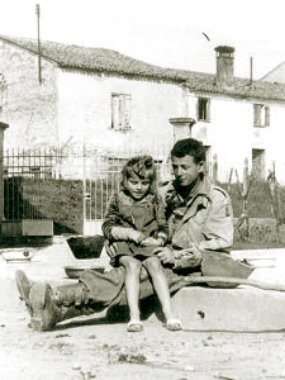
byu-saints-at-war-5.jpg
In addition to written and verbal accounts of World War II veterans, the BYU Saints at War archive includes other war memorabilia, such as a photograph of Alvin R. Carlson with a little girl in Italy. Historic photo from BYU Saints at War archive, courtesy of Church News.All rights reserved.Church Leaders Who Served
The following are some of the Church leaders who are featured in the “Saints at War” project:
World War I
- President Hugh B. Brown, First Counselor in the First Presidency, Canadian Army.
- Elder Delbert L. Stapley, Quorum of the Twelve Apostles, U.S. Marine Corps.
- Elder S. Dilworth Young, General Authority Seventy, U.S. military.
World War II
- President Thomas S. Monson, U.S. Naval Reserve.
- President James E. Faust, Second Counselor in the First Presidency, U.S. Army Air Corps.
- President Boyd K. Packer, Quorum of the Twelve Apostles, U.S. Air Force.
- Elder David B. Haight, Quorum of the Twelve Apostles, U.S. Navy
- Elder Neal A. Maxwell, Quorum of the Twelve Apostles, U.S. Army.
- Elder Dieter F. Uchtdorf, Quorum of the Twelve Apostles, shares family experiences in Europe as a young boy.
- Elder L. Tom Perry, Quorum of the Twelve Apostles, U.S. Marine Corps.
- Elder A. Theodore Tuttle, emeritus General Authority Seventy, U.S. Marine Corps.
- Elder Robert L. Backman, emeritus General Authority Seventy, U.S. Army.
- Elder F. Enzio Busche, General Authority Seventy, German Army.
Korean War
- President Russell M. Nelson, U.S. Army.
Vietnam War
- Elder Lance B. Wickman, emeritus General Authority Seventy, U.S. Army.
Notable
- Pvt. Thomas Neibaur, a native of Sugar City, Idaho, was the first Latter-day Saint to receive the Medal of Honor for his service with the U.S. Army during World War I.
- Three Latter-day Saint chaplains who served during World War I were Herbert Maw, best remembered as Utah’s eighth governor; Calvin S. Smith, a son of the Church’s sixth President, Joseph F. Smith, who was known as “Utah’s Fighting Chaplain”; and Elder B.H. Roberts, a general authority and Church historian.
Here are the accounts of three Church leaders who shared their experiences with the “Saints at War” project.
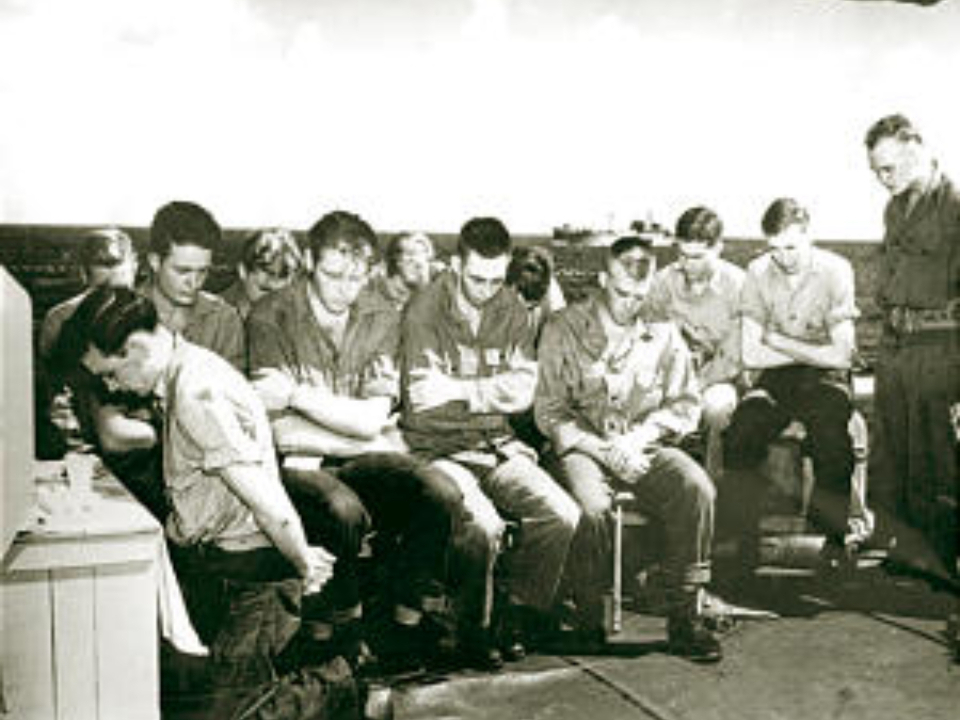
byu-saints-at-war-6.jpg
Military Church members taking sacrament on the fantail of the USS Cambria in 1944. Historic photo from BYU Saints at War archive, courtesy of Church News.All rights reserved.Elder Neal A. Maxwell, World War II
Elder Neal A. Maxwell of the Quorum of the Twelve Apostles, who died in 2004, served as an infantryman in the U.S Army. He fought in the battle of Okinawa and was part of the occupation force in Japan after the war.
Part of Elder Maxwell’s experience is told in “Saints, Vol. 3.” During the battle of Okinawa, in the midst of heavy warfare and relentless rains, he found himself in a foxhole that became saturated with mud, making rest nearly impossible. He endured meager rations and foul-tasting water but chose to follow the Word of Wisdom by refraining from coffee and instead gathering rainwater. On Sundays, he used saved rainwater and a biscuit for the sacrament.
One night in May 1945, as enemy shells exploded near his position, Elder Maxwell left his foxhole but soon returned when he realized there was no where else to go. Kneeling in the mud and darkness, he prayed fervently, acknowledging that many righteous men had died despite their prayers. He asked the Lord to spare his life, promising to dedicate himself to God’s service if he survived. He found solace in his patriarchal blessing, which promised divine protection. After his prayer, the shelling ceased, and Elder Maxwell felt a profound sense of divine intervention. Grateful, he wrote to his family, expressing his loneliness and the heavy toll of war on his spirit. He acknowledged that only God had prevented his death and affirmed his testimony.
In his account with “Saints at War,” Elder Maxwell said: “My only surviving aunt said that sometime in May of 1945, she doesn’t remember the day, Mother had told her the next day that she and Dad had prayed their usual vocal prayer and included me, of course, and my sisters. Then they got into bed and began to go to sleep, and Mother said, ‘Clarence, we’ve got to get out of bed and pray again; Neal is in grave danger.’ And so they got out of bed and prayed again for me. I don’t know which day that was, but I rather imagine, given time zones and all of that, it would have probably been when Japanese artillery shelling occurred at its worst stage. The phrase that comes to mind from the Book of Mormon is about some other young men who went off to war and (what) they (said) was, ‘We do not doubt our mothers knew it.’ I don’t have any doubt that my mother knew intuitively that they needed to pray. Such parenting … is what I hope our young men and women experience, because they will be at times in great danger, too.”
— “Saints at War: Experiences of Latter-day Saints in World War II,” p. 358
President Boyd K. Packer, World War II
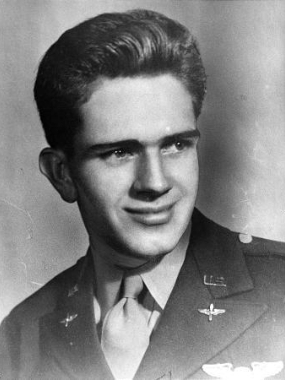
byu-saints-at-war-7.jpg
President Boyd K. Packer as a young man in the World War II Army Corps in the early 1940s. Photo from Deseret News archive, courtesy of Church News.Copyright 2024 Deseret News Publishing Company.The late President Boyd K. Packer, who served as president of the Quorum of the Twelve Apostles before his death in 2015, enlisted in the United States Air Force in the spring of 1943. He was trained to fly bombers and was assigned as a pilot in the Pacific, stationed with the American occupation forces in Japan for nearly a year. During that time, he was instrumental in baptizing the first Japanese family that joined the Church after the war.
His brother, Col. Leon C. Packer, was a much decorated pilot who became a brigadier general in the Air Force. Before leaving for the war in the Pacific, President Packer visited with his brother in Washington, D.C. and asked him how he kept himself together in dangerous situations. His brother said he would sing a hymn to himself, and the hymn would sustain him and help him stay on the course. In the following account, President Packer shares a time when his brother’s advice helped him through a dangerous situation.
“In the spring of 1945 I was able to test that lesson Leon had taught me those months before. The war in the Pacific ended before we reached the Philippines, and we were ordered to Japan. One day we flew out of Atsugi airfield near Yokohama in a B-17 bomber bound for Guam to pick up a beacon light. After nine hours in the air, we flew down through the clouds to find ourselves hopelessly lost. Our radio was out. We were, as it turned out, in a typhoon. Flying just above the ocean, we began a search pattern. In that desperate situation, I remembered the words of my brother. I learned that you can pray and even sing without making a sound. After some time we pulled up over a line of rocks jutting out of the water. Could they be part of the chain of Mariana Islands? We followed them. Soon Tinian Island loomed ahead, and we landed within literally seconds of fuel in the tank. As we headed down the runway, the engines one by one stopped.”
— “Saints at War: Experiences of Latter-day Saints in World War II,” pp. 373-375
Elder Lance B. Wickman, Vietnam War
Elder Wickman served as a captain in the U.S. Army from 1964 to 1969. During that time he completed two tours of duty in Vietnam as an Army Ranger officer assigned first as an infantry platoon leader and next as an adviser to the South Vietnamese Army. For his service, he was awarded the Bronze Star and Purple Heart medals. He was called to the Second Quorum of the Seventy in 1994 and later served in the First Quorum of the Seventy from 2000 to 2010 before receiving emeritus status.
“It was early November 1966. I had been in country for nearly 10 months. Our battalion had spent several weeks in the field and had just returned to our base camp for a period of rest and relaxation. It was Saturday night and having just taken our first shower in many days, we were sitting on our bunks cleaning our weapons and listening to music on the Armed Forces Radio Network. Suddenly, an urgent message was received at our battalion headquarters in the jungle. Our battalion was needed to go to the rescue immediately.
“In my case, that feeling of anxiety that is more or less one’s constant companion in the combat zone ripened into a dark sense of foreboding. However, there was no time for reflection or a kneeling prayer. We had to grab our weapons and equipment and go. As we moved out through the entrance to our base camp, I uttered a silent prayer in my heart. As I did so, there came to my mind — literally — a still small voice. It was as clear as crystal, and it spoke the words to a passage of scripture that I had first memorized as a seminary student and then later as a full-time missionary. It is found in Proverbs 3:5-6: ‘Trust in the Lord with all thine heart; and lean not unto thine own understanding. In all thy ways acknowledge him, and he shall direct thy paths.’ No sooner did that voice come into my mind than the sense of foreboding vanished. In its place was a warm reassurance of peace.
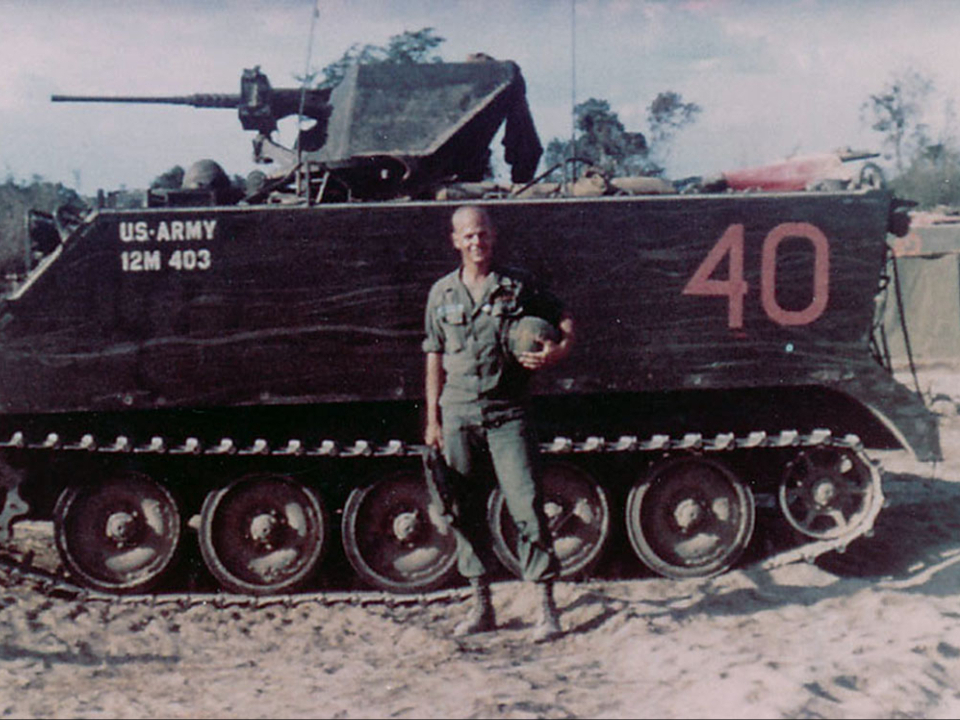
byu-saints-at-war-8.jpg
Elder Lance B. Wickman stands in front of a tank. Elder Wickman served in the Army from 1964-69. He completed two tours of duty in Vietnam as an Army Ranger officer. Photo from Saints at War Collection, L. Tom Perry Special Collections, BYU, courtesy of Church News.All rights reserved.“Our battalion’s night rescue mission lengthened into another extended operation that took us far from our base camp, almost to the Cambodian border in Tay Ninh Province. As the days and weeks went by, that experience with the Spirit was crowded to the back of my mind. Finally, it was the day of Thanksgiving 1966 — the last day we were to be in the field on that particular operation. I was riding in an armored personal carrier through a lightly forested area of jungle. Suddenly, there was a tremendous explosion beneath the vehicle that seemed to lift it into the air. We had rolled over an enormous enemy land mine.
“The force of the explosion was so great that it blew the engine apart. It blew the tracks and all of the road wheels off both sides of the vehicle. The driver was blasted from the vehicle, landing some 15 or 20 feet in front of it. Everyone inside was wounded, including me, but no one was killed.
“No sooner did that land mine explode, than there again came to my mind the same voice and that same passage of scripture: ‘Trust in the Lord with all thine heart; and lean not unto thine own understanding. In all thy ways acknowledge him, and he shall direct thy paths.’
“There was no question that my life was spared that day by divine intervention. More than that, this experience serves as one of the most profound in my life in testifying of the reality of God and His Beloved Son, Jesus Christ. Now, as a Seventy and a general authority, I stand as an ‘especial witness’ (Doctrine and Covenants 107:25). I testify that I received an essential element of that witness on a jungle battlefield far from home on that November day in 1966.”
— “Saints at War: Korea and Vietnam,” pp. 451-454
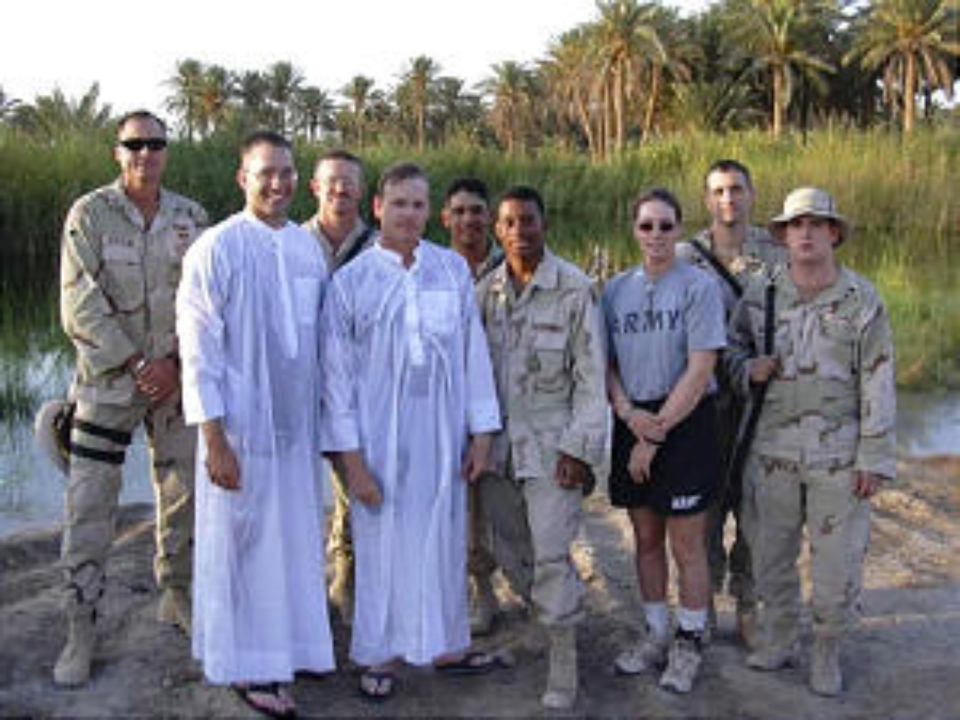
byu-saints-at-war-9.jpg
Third Armored Cavalry Regiment's Latter-day Saint service member's group shown after performing a baptism in an oasis in western Iraq's Al Anbar Province; Tony Bertolino, far left, was later killed by sniper fire. Kevin Wood, center, was baptized. Photo from BYU Saints at War project, courtesy of Church News.All rights reserved.Copyright 2024 Deseret News Publishing Company.